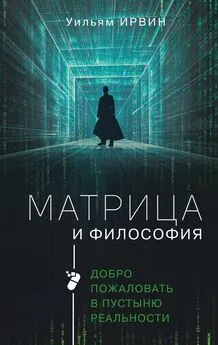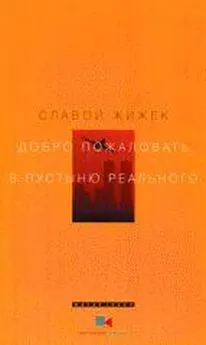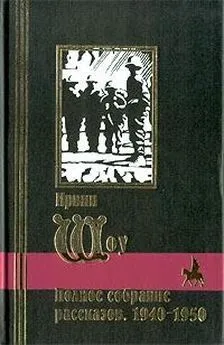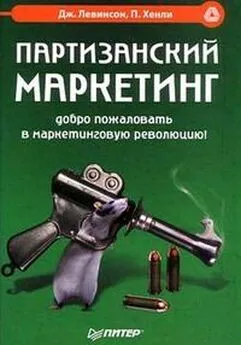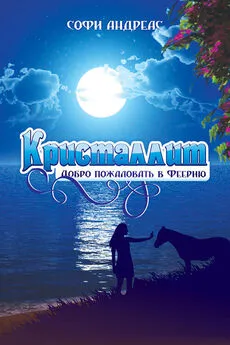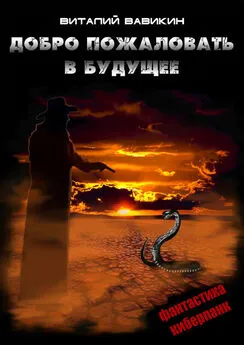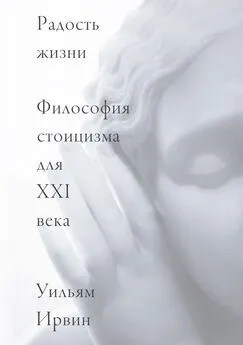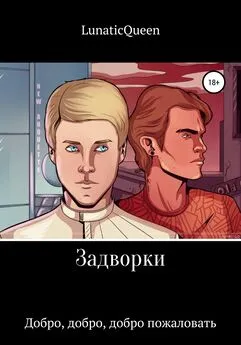Уильям Ирвин - Матрица и философия. Добро пожаловать в пустыню реальности
- Название:Матрица и философия. Добро пожаловать в пустыню реальности
- Автор:
- Жанр:
- Издательство:Литагент АСТ (БЕЗ ПОДПИСКИ)
- Год:2022
- Город:Москва
- ISBN:978-5-17-145392-3
- Рейтинг:
- Избранное:Добавить в избранное
-
Отзывы:
-
Ваша оценка:
Уильям Ирвин - Матрица и философия. Добро пожаловать в пустыню реальности краткое содержание
«Матрица» – это коктейль из различных мотивов: дзен-буддизма, юнгианской психологии, популярной квантовой механики, гонконгских фильмов о боевых искусствах и других «ингредиентов». Сестры Вачовски новаторски объединили в фильме аспекты популярной культуры и академического знания.
Философские концепции античных мыслителей и мрачные умозаключения ученых эпохи постмодернизма органично сосуществуют в научно-фантастической реальности. Однако настолько ли она фантастическая, какой кажется на первый взгляд? И что вообще есть реальность? Тринити наклоняется к уху Нео и шепчет: «Вопрос, вот что не дает нам покоя».
В формате PDF A4 сохранен издательский макет книги.
Матрица и философия. Добро пожаловать в пустыню реальности - читать онлайн бесплатно ознакомительный отрывок
Интервал:
Закладка:
Immanuel Kant, Groundwork of the Metaphysics of Morals , translated by H.J. Paton (New York: Harper and Row, 1964), p. 61.
30
Robert Nozick, Anarchy, State, and Utopia (New York: Basic Books, 1974), pp. 42–43.
31
Richard Taylor, Metaphysics (Englewood Cliffs: Prentice-Hall, 1974), p. 59.
32
Boethius, The Consolation of Philosophy, Book 5, translated by W.V. Cooper (London: Dent, 1902), pp. 145, 147.
33
John Calvin , Institutes of the Christian Religion , translated by John Allen (Philadelphia: Presbyterian Board of Publication, 1813), Book 3, Chapter 21, Section 5.
34
Theodore M. Drange, “Incompatible-Properties Arguments: A Survey.” Philo 2 (Fall—Winter 1998).
35
St. Thomas Aquinas, Summa Theologica, translated by Fathers of the Dominican Province (Westminster: Christian Classics, 1948) Volume 1, Question 25, Answer 3.
36
A Philosophical Essay on Probabilities , translated by F.W. Truscott and F.L. Emory (New York: Dover, 1951), p. 4.
37
B.F. Skinner , Beyond Freedom and Dignity (New York: Bantam, 1972).
38
Sir Arthur Eddington , New Pathways in Science (New York: Macmillan, 1935), p. 82.
39
см. Alvin Goldman, A Theory of Human Action (Englewood Cliffs: Prentice-Hall, 1970), pp. 186ff.
40
Majjhima-nikaya 1.415, cited in David J. Kalupahana, A History of Buddhist Philosophy: Continuities and Discontinuities (Honolulu: University of Hawaii Press, 1992), p. 106.
41
Джеймс Форд внимательно подмечает, что это вывод школы Йогачара буддизма Махаяны в статье «Buddhism, Christianity, and The Matrix», Journal of Religion and Film 4:2 (October 2000).
42
Takuan Soho, The Unfettered Mind: Writings of the Zen Master to the Sword Master, translated by William Scott Wilson (Tokyo: Kodansha International, 1986), p. 19.
43
Shantideva’s Compendium of Doctrine (Siksasamuccaya) , in William Theodore de Bary, ed., The Buddhist Tradition (New York: Random House, 1972), p. 84.
44
Richard Corliss and Jeffrey Ressner, Popular Metaphysics, Time (April 19th, 1999), p. 76.
45
см. Catechism of the Catholic Church (Mahwah: Paulist Press, 1994), p. 258.
46
Corliss and Ressner, Popular Metaphysics, p. 76.
47
Вачовски признавали мотивы гностицизма в фильме, см.: Matrix Virtual Theatre: Wachowski Brothers Transcript (Nov. 6, 1999).
48
см.: John Hick, Death and Eternal Life (San Francisco: Harper and Row, 1976), pp. 296–396.
49
Fritjof Capra, The Tao of Physics , second revised edition (Boston: Shambala, 1983), pp. 161–187.
50
George Barna, Absolute Confusion (Ventura: Regal, 1994), p. 207.
51
Термин «радикальный плюрализм» позаимствован у Кита Варда. См.: Truth and the Diversity of Religions, Religious Studies 26 (March 1990).
52
Michael Shermer, How We Believe: The Search for God in an Age of Science (New York: Freeman, 2000), p. 140.
53
См.: Joel B. Green, Bodies—That Is, Human Lives’: A Re-Examination of Human Nature in the Bible, в сборнике Warren S. Brown, Nancey Murphy, and H. Newton Malony, eds., Whatever Happened to the Soul? Scientific and Theological Portraits of Human Nature (Minneapolis: Fortress, 1998), pp. 149–173.
54
John Hick, An Interpretation of Religion: Human Responses to the Transcendent (New Haven: Yale University Press, 1989).
55
Моя критика Хика основывается на книге Алвина Платинги Warranted Christian Belief (New York: Oxford University Press, 1999), p. 56 и на его статье Pluralism: A Defense of Religious Exclusivism.
56
См.: John Hick, Religious Pluralism and Salvation, Faith and Philosophy 5 (October 1988).
57
См.: Joseph Runzo, God, Commitment, and Other Faiths: Pluralism vs. Relativism, Faith and Philosophy 5 (1988), p. 348; Wilfred Cantwell Smith, Religious Diversity (New York: Harper and Row, 1976), pp. 13–14; John Hick, God Has Many Names (Philadelphia: Westminster, 1982), p. 90.
58
См.: Alvis Plantinga, A Defense of Religious Pluralism, pp. 177–78; Timothy O’Connor, Religious Pluralism, p. 171.
59
Alvis Plantinga, A Defense of Religious Exclusivism, p. 177.
60
См.: John Hick, An Interpretation of Religion, p. 235; Hick, God Has Many Names, p. 90.
61
Alvis Plantinga, Warranted Christian Belief, pp. 62–63.
62
An Essay Concerning Human Understanding, edited by P.H. Nidditch (Oxford: Clarendon, 1990), II. xxi. 59 (p. 273).
63
Перевод Бориса Пастернака. – Прим. пер.
64
См.: James Lawler, The Moral World of the Simpson Family: A Kantian Perspective, in William Irwin, Mark T. Conard, and Aeon J. Skoble, eds., The Simpsons and Philosophy (Chicago: Open Court, 2001), pp. 147–159.
65
Immanuel Kant, Universal Natural History and Theory of the Heavens, translated by Stanley L. Jaki (Edinburgh: Scottish Academic Press, 1981), pp. 195–96.
66
Это сходство прослеживается в первоначальном сценарии: там есть слова «ВОЗДУХ КОЛЫШЕТСЯ, когда мальчик вглядывается в проносящегося над его головой Нео. Когда тот взмывает вверх и уносится прочь, его плащ развевается, подобно черной кожаной накидке».
67
См. мою книгу Shows About Nothing: Nihilism in Popular Culture from The Exorcist to Seinfeld (Dallas: Spence, 1999).
68
См.: Joseph Frank’s Dostoevsky: The Stir of Liberation, 1860–1865 (Princeton: Princeton University Press, 1986), pp. 310–347.
69
Adrienne MacLean, Media Effects: Marshall McLuhan, Television Culture, and ‘The X-Files’, Film Quarterly 51 (Summer 1998), pp. 2–9.
70
Nightmare on Main Street: Angels, Sadomasochism, and the Culture of the Gothic (Cambridge: Harvard University Press, 1997), p. 77.
71
Jean-Paul Sartre, Being and Nothingness (New York: Washington Square Press, 1956).
72
Albert Camus, An Absurd Reasoning, in The Myth of Sisyphus and Other Essays (New York: Vintage, 1955).
73
Jean-Paul Sartre, Nausea (New York: New Directions, 1964), p. 2.
74
В «Экзистенции» Дэвид Кроненберг, возможно, в целом сомневается в том, что есть надежный способ различать реальность, виртуальные реальности и вымысел.
75
См.: Jerrold Levinson, Emotion in Response to Art: A Survey of the Terrain, в Mette Hjort and Sue Laver, eds., Emotion and the Arts (Oxford: Oxford University Press, 1997), pp. 20–34.
76
Kendall Walton, Mimesis as Make-Believe (Oxford: Oxford University Press, 1990).
77
Roger Schank, Tell Me a Story: Narrative and Intelligence (Evanston: Northwestern University Press, 1998), p. 115.
78
Linda Williams, Film Bodies: Gender, Genre, and Excess, in Barry Keith Grant, ed., Film Genre Reader II (Austin: University of Texas Press, 1995), pp. 140–158.
79
Thomas Schatz, Old Hollywood / New Hollywood: Ritual, Art, and Industry (Ann Arbor: UMI Research, 1983), p. 86.
80
Thomas Sobchack, Genre Film: A Classical Experience, in Film Genre Reader II, p. 102.
81
Genevieve Lloyd, The Man of Reason: “Male” and “Female” in Western Philosophy (Minneapolis: University of Minnesota Press, 1984) и Susan Bordo, Unbearable Weight: Feminism, Western Culture, and the Body (Berkeley: University of California Press, 1993).
82
Chris Rodley, ed., Cronenberg on Cronenberg (London: Faber and Faber, revised edition 1997), pp. 80–82.
83
Logic, Creativity, and (Critical) Misinterpretations: An Interview with David Cronenberg, conducted by Xavier Mendik, in Michael Grant, ed., The Modern Fantastic: The Films of David Cronenberg (Westport: Praeger, 2000), pp. 176–77.
84
Frederic L. Bender, ed., The Communist Manifesto (New York: Norton, 1988), pp. 61–62.
85
Robert C. Tucker, ed., The Marx-Engels Reader , second edition (New York: Norton, 1978), p. 204.
86
The Fetishism of Commodities and the Secret Thereof in Capital: A Critique of Political Economy (New York: Modern Library, 1906), p. 83.
87
Max Horkheimer and Theodor W. Adorno, Dialectic of Enlightenment , translated by John Cumming (New York: Continuum, 1995), pp. 120–167.
88
Simulations (New York: Semiotext(e), 1983), а также America (London: Verso, 1988) и The Gulf War Did Not Take Place (Bloomington: Indiana University Press, 1995).
89
La société du spectacle (Paris: Éditions Buchet-Chastel, 1967).
90
You Won’t Know the Difference So You Can’t Make the Choice, Philosophy Now (December 2000/January 2001), pp. 35–36.
91
Baudrillard, Simulations , pp. 146, 147, 151.
92
При прочтении чернового сценария выясняется, что Вачовски были достаточно умны, чтобы вычеркнуть некоторые псевдоинтеллектуальные отсылки: «Взгляни на них. Автоматы. Не задумываются, что они делают и почему. Компьютеры приказывают им делать, и они исполняют». «Банальность зла». В этой претенциозной ссылке на Ханну Арендт упущено главное: люди, погруженные в Матрицу, находятся в абсолютно иной, практически противоположной позиции по сравнению с палачами Холокоста. Еще одним мудрым решением было отбросить слишком очевидные отсылки к восточным техникам медитации, которые помогли бы освободиться из Матрицы: «Тебе нужно научиться отпускать свой гнев, отпускать все мысли. Чтобы освободить разум, нужно все отпустить».
Читать дальшеИнтервал:
Закладка:
